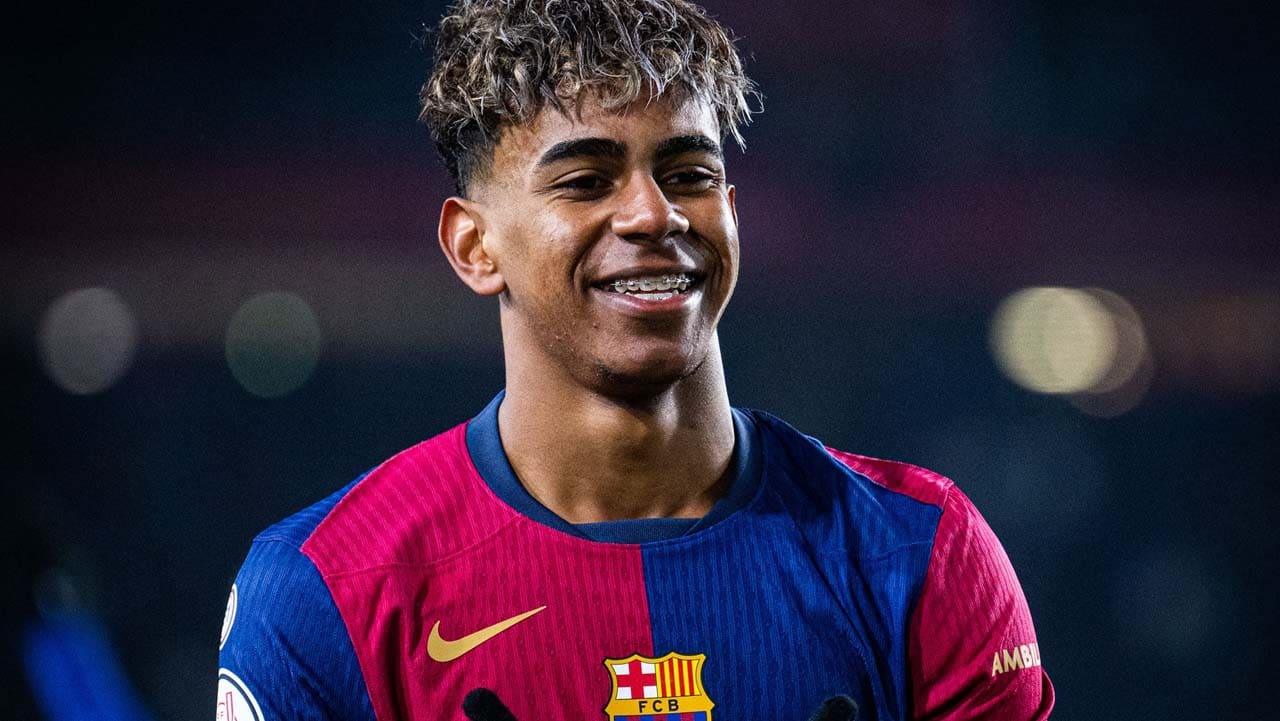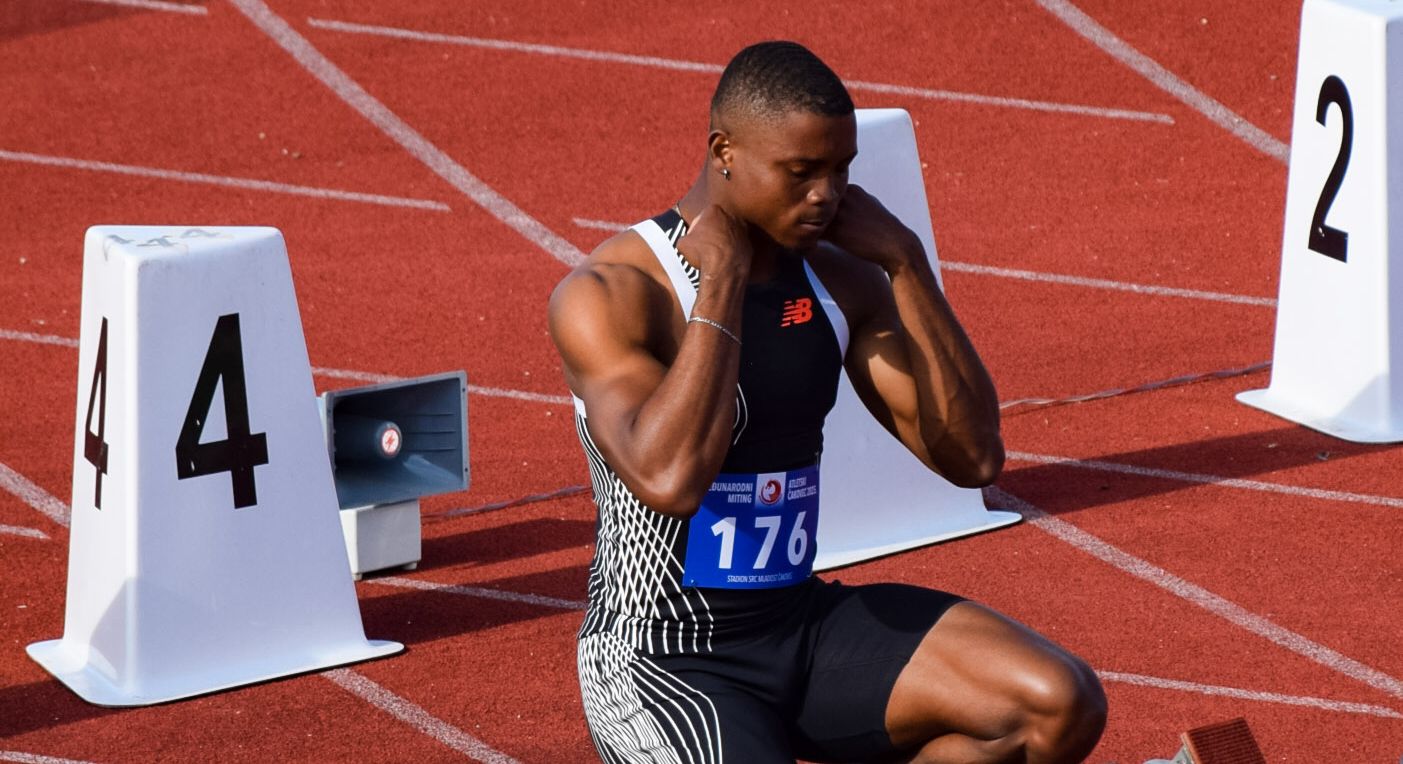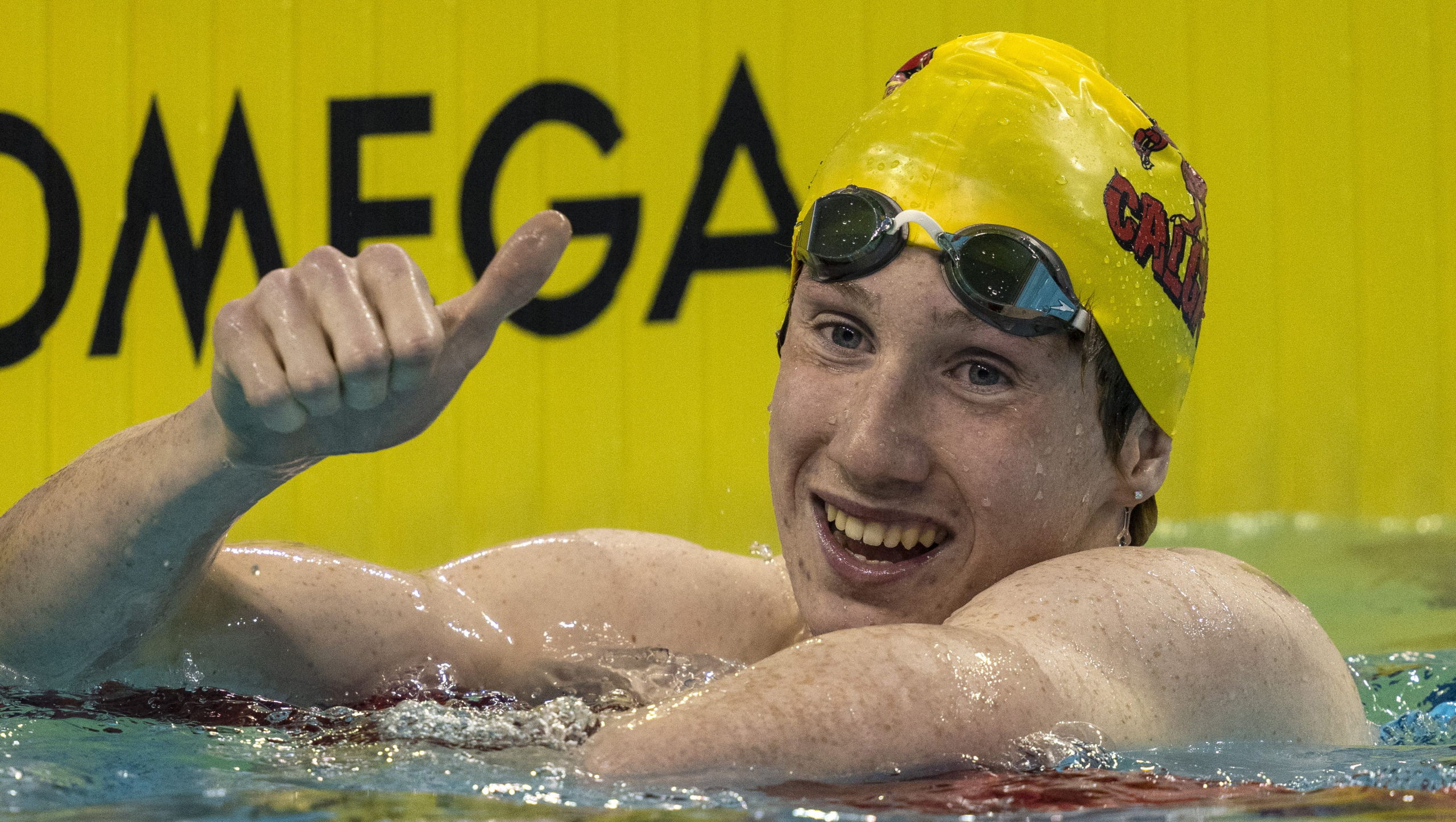PR Watch
Technology in Sports: A Revolution in Motion

The Dawn of Technological Advancement in Sports
The relationship between sports and technology is a long and fascinating one. While we often associate cutting-edge innovations with modern sports, the truth is that technology has always played a role, albeit in more rudimentary forms.
Early examples include the development of stopwatches to measure race times accurately and the gradual evolution of athletic footwear, from essential leather shoes to the high-tech, performance-enhancing boots and sneakers we see today. These early innovations, while seemingly simple, laid the groundwork for the profound technological revolution that would later transform the world of sports.
The Digital Age: A Turning Point
The advent of computers and the internet marked a significant turning point in the relationship between sports and technology. Computers enabled the collection and analysis of vast amounts of data on athlete performance, leading to the development of early forms of sports analytics. Though initially limited, video analysis gave coaches valuable insights into player technique and game strategy. While nascent, these early applications of technology hinted at the potential that lay ahead.
How Technology Has Changed Sports
Revolutionizing Training Methods:
Today, technology in sports has permeated every aspect of the experience, from training and competition to fan engagement. In training, the impact of technology is undeniable. GPS tracking devices provide real-time data on athlete movement, allowing coaches to monitor training intensity, identify areas for improvement, and tailor training programs to individual needs.
Wearable technology, such as smartwatches and fitness trackers, provides athletes and officials personalized data on their vital organ rate, sleep patterns, officiating rules, and overall fitness levels, optimizing their performance and recovery.

Enhanced Athlete Performance:
The integration of technology has significantly improved athlete performance. Data analysis, powered by sophisticated algorithms and machine learning, provides coaches and athletes with invaluable insights into performance trends, identifying strengths and weaknesses, and predicting potential injuries.
Biomechanics, aided by motion capture technology and 3D modelling, allows for a deeper understanding of human movement, enabling coaches to refine techniques and optimize performance. Personalized training plans, tailored to individual athlete needs and goals, are now commonplace, maximizing efficiency and minimizing the risk of overtraining.
Reducing Injuries and Improving Recovery:
Technology plays a crucial role in injury prevention and recovery. Wearable sensors can monitor athlete movements in real-time, alerting coaches and trainers to abnormal patterns that may indicate an increased risk of injury. Advanced physiotherapy techniques, such as electrotherapy and cryotherapy, aided by technology, facilitate faster recovery times and minimize the long-term impact of injuries.
Sports medicine has also significantly benefited from technological advancements, with access to cutting-edge imaging techniques, such as MRI and CT scans, enabling more accurate diagnosis and treatment of sports-related injuries.
Transforming the Competitive Landscape:
Technology has fundamentally transformed the competitive landscape of sports. Instant replays, facilitated by high-definition cameras and sophisticated video analysis software, have revolutionized officiating, minimizing human error and ensuring fair play.
Video analysis, now commonplace in professional sports, provides coaches invaluable insights into opponent strategies, player tendencies, and game-day adjustments. Integrated into stadiums and arenas, performance tracking systems provide real-time data on player performance, allowing for in-game adjustments and more informed decision-making. Sports analytics, powered by big data and machine learning, is increasingly used to identify talent, predict game outcomes, and optimize team strategies.

Enhancing the Fan Experience:
Technology has significantly enhanced the fan experience, bringing fans closer to the action than ever before. Live streaming platforms allow fans to watch games from anywhere in the world. At the same time, social media provides a platform for fans to connect with their favorite teams and athletes, share their passion, and engage in real-time discussions.
Virtual and augmented reality experiences are emerging, offering fans immersive and interactive experiences, such as virtual stadium tours, personalized player interactions, and the ability to experience the game from a player’s perspective. Interactive games and fantasy sports leagues allow fans to engage with their favorite teams and players, adding a new layer of excitement and engagement.
Improving Officiating and Decision-Making:
Technology has played a significant role in improving officiating and decision-making in sports. Video assistant referees (VAR), now widely used in major sports leagues, help officials review controversial decisions, ensuring fair play and minimizing human error.
Goal-line technology, such as electronic sensors or cameras, provides definitive proof of whether the ball has crossed the goal line, eliminating ambiguity and ensuring accurate goal decisions. Electronic line calling systems, used in tennis and other sports, provide instant and precise calls on serves and other crucial moments, enhancing the speed and accuracy of play.

Don’t miss: Ray-Ban Meta Smart Glasses is Honing its Unique Capabilities
How Technology Has Changed Sports Over Time: The Impact on Athletes
The Mental Game: Technology and the Mind
The impact of technology extends beyond physical performance, influencing the mental game as well. Mental training apps, designed to enhance focus, reduce anxiety, and improve mental resilience, provide athletes with valuable tools for mental preparation.
Performance visualization tools like virtual reality simulations allow athletes to mentally rehearse game scenarios, improving their decision-making and confidence under pressure. Data-driven insights into an athlete’s emotional and mental state can help sports psychologists and coaches develop personalized mental training programs that address specific challenges and maximize performance potential.
The Social Impact: Technology and Athlete Brand Building
Technology has empowered athletes to build their brands and connect directly with fans. Social media platforms provide a powerful platform for athletes to share their stories, interact with fans, and create a strong personal brand. Personal websites and streaming platforms allow athletes to share their training routines, behind-the-scenes footage, and exclusive content with their fans, fostering a deeper connection and building a loyal fan base.
Direct-to-fan engagement initiatives, such as exclusive merchandise, fan meet-and-greets, and personalized messages, allow athletes to monetize their brand and build stronger relationships with their supporters.
The Future of Technology in Sports: Emerging Trends
Artificial Intelligence (AI) and Machine Learning:
The future of technology in sports is bright, with emerging trends poised to revolutionize the industry. Artificial intelligence (AI) and machine learning are at the forefront of this technological revolution. AI algorithms can analyze vast amounts of data, identifying patterns and trends that are invisible to the human eye. This can predict player performance, identify potential injuries, optimize training schedules, and scout and recruit promising young talent. Machine learning algorithms can continuously learn and adapt, improving accuracy and effectiveness and providing coaches and athletes with increasingly sophisticated insights and predictions.
The Rise of E-sports:
E-sports, or competitive video gaming, has emerged as a significant force in sports, attracting millions of fans and generating billions of dollars in revenue. From its inception, e-sports has embraced technology, with high-speed internet, powerful gaming hardware, and advanced streaming technologies playing crucial roles in its growth. E-sports has also pioneered the use of technology in areas such as player performance tracking, team communication, and fan engagement, offering valuable lessons and innovations for traditional sports.
The Metaverse and the Future of Fan Engagement:
The Metaverse, a concept of interconnected virtual worlds, holds immense potential for the future of sports. Imagine a virtual stadium where fans can experience the thrill of a live game from anywhere in the world, interact with other fans, and customize their viewing experience. The metaverse could offer immersive and interactive experiences, such as virtual tryouts, personalized training programs, and the ability to interact with athletes in new and exciting ways. While still in its early stages, the metaverse has the potential to revolutionize fan engagement and create entirely new forms of sports entertainment.
Don’t miss: Augmented Reality in Basketball: A Game-Changer
The Challenges and Considerations
Data Privacy and Security:
The increasing reliance on technology in sports raises important concerns about data privacy and security. The collection and analysis of vast amounts of athlete data, including personal and sensitive information, requires robust data protection measures to ensure the confidentiality and security of this information.
The Accessibility and Equity of Technology in Sports:
Ensuring equitable access to technology for all athletes, regardless of their socioeconomic background, is crucial. The cost of advanced training technologies, such as wearable devices and personalized training programs, can be prohibitive for many athletes, potentially creating an uneven playing field. Efforts must be made to ensure that all athletes have access to the tools and resources they need to succeed, regardless of their financial circumstances.
The Enduring Power of Human Spirit and Technological Innovation
Technology in sports has undeniably been transformational, from training and competition to fan engagement. From the early days of stopwatches and rudimentary footwear to today’s cutting-edge AI and virtual reality technologies. It has continuously pushed the boundaries of human performance and redefined the sports landscape. However, while technology plays a crucial role, the enduring power of the human spirit, dedication, and perseverance remain at the heart of all outstanding sporting achievements.
Continued technological advancements will undoubtedly shape the future of sports. As we continue embracing these innovations, it is crucial to maintain a balanced approach, prioritizing human performance, ethical considerations, and the spirit of fair play. By harnessing the power of technology responsibly, we can create a future where sports continue to inspire, entertain, and unite people worldwide.
Don’t miss: Sports Wear: A Guide to Finding the Perfect Fit
Frequently Asked Questions
Q. How has technology impacted athlete training methods?
Technology has revolutionized athlete training through GPS tracking, wearable technology, personalized training plans, and virtual reality training, enabling more efficient and effective training regimens.
Q. What are the ethical concerns surrounding the use of technology in sports?
Ethical concerns include using performance-enhancing technologies, the potential for cheating, and the impact on the human element of sport.
Q. How does technology enhance the fan experience?
Technology enhances the fan experience through live streaming, social media, virtual and augmented reality experiences, interactive games, and fantasy sports leagues.
Q. What is the role of artificial intelligence (AI) in the future of sports?
AI will play a crucial role in sports, enabling predictive analytics, personalized training, injury prevention, and talent scouting.
Q. What is the metaverse, and how can it impact sports?
The metaverse is a concept of interconnected virtual worlds that has the potential to revolutionize fan engagement through immersive experiences, virtual stadiums, and new forms of sports entertainment.
PR Watch
Young Rising Athletes to Watch: The Future of Sports

Youth sports play a crucial role in the development of young athletes. They provide opportunities for children to learn valuable life skills, develop athletic abilities, and have fun. By investing in youth sports, we are investing in the future of our communities and the world of sports.
Despite the many benefits of youth sports, young athletes often face significant challenges. These include pressure to perform, injuries, financial difficulties, and a lack of opportunities. Overcoming these challenges requires resilience and perseverance, as well as support from parents, coaches, and the community.
Amidst the challenges, countless young athletes are rising to the occasion and showcasing their incredible talent. These young rising stars have the potential to become future sports legends and inspire the next generation of athletes.
Read More on: Women of Color Claim the 5 Highest Women’s Football Transfer
Young Rising Athletes in Popular Sports
Rising Athletes in Basketball
Basketball has a long history of producing incredible young talent. Countless basketball phenoms have emerged from the youth ranks, from Kobe Bryant to LeBron James. Today, a new generation of basketball stars is rising, ready to make their mark on the sport.
The Next Generation of Basketball Phenoms
Some of the world’s most promising young basketball players include Bronny James and Isaac Okoro. These athletes have demonstrated exceptional skills, athleticism, and potential. With continued development and hard work, they could become future NBA stars.
Young Players to Watch
Here are some key players to watch in the world of young basketball this upcoming season:
- Bronny James is known for his point guard and shooting skills and attributes.
- Isaac Okoro: With his impressive defence prowess in the NBA, he is a rising star in the basketball world
How Good is Bonny Bronny James?
Bonny is actually a very good prospect regardless of who his father is. He has very good defensive guard skills and basketball IQ. He also has very good mechanics on his shot- not a pure scorer which is excusable but he’s likely one shooter to look out for.
His 2024/25 Regular Season Stats have:
PTS: 2.3 REB: O.7 AST: 0.8 FG%: 31.3

Bronny James- Source: ESPN
How Good is Isaac Okoro?
Isaac Okoro is a highly effective NBA role man known for his strong perimeter defense and reliable three-point shooting with a “3-and-D” skillset. He may not be a primary playmaker or scorer but he excels at the strengths of his game thanks to his own strength and agility to bother opponents and taking advantage of open shots generated by his team mates.
Okoro also provides significant positive impact as a defender and a spot-up shooter according to metrics and analysis which will make him a valuable contributor to his new team the Chicago Bulls.
His 2024/25 Regular Season Stats have:
PTS: 6.1 REB: 2.4 AST: 1.2 FG%: 46.4

Isaac Okoro in Cleveland Cavaliers Colors- Source: Cavs
Young Rising Athletes in Soccer
Soccer is the most popular sport globally and continues to produce incredible young talent. From Lionel Messi to Cristiano Ronaldo, countless soccer stars have emerged from the youth ranks. Today, a new generation of soccer phenoms is rising, ready to make their mark on the sport.
The Future of Soccer: Emerging Talents
Some of the world’s most promising young soccer players include Lamine Yamal and Cole Palmer. These athletes have demonstrated exceptional skills, athleticism, and potential. With continued development and hard work, they could become future superstars in the world of soccer.
Promising Young Soccer Stars
Here are some promising young soccer stars to watch:
- Lamine Yamal: Known for his unique dribbling skills and passing attributes, Yamal has the potential to be a dominant force in soccer.
- Cole Palmer: With his clear sight and hunger for goals that have driven Chelsea FCs thrive, Cole Palmer is a rising star in soccer.
How Good is Lamine Yamal?
Lamine Yamal is one exceptional young talent now widely considered as one of the best young players in the world. At 17 years old he had already achieved significant milestones and broken many records, showcasing maturity and skills beyond his years. His performances so far have earned him comparisons to football legends and high praises from coaches, pundits and fellow players.
His 2024/25 Regular Season Stats have:
Games: 55 Mins: 4,553’ Goals: 18 Assists: 25

Lamine Yamal in Barcelona Colors- Source: Facebook
How Good is Cole Palmer?
Cole palmer is another exceptionally talented and consistent player, considered by many to be among the best in the Premier League. His unique ability to score and create goals plus his vision, calmness on the ball and composure in big moments have made him a key player for Chelsea, leading to a handful of individual awards including Premier League Young Player of the Year and a meaningful case for being a team’s centerpiece.
His 2024/25 Regular Se ason Stats have:
Games: 52 Mins: 4,247’ Goals: 18 Assists: 14

Cole Palmer Trademark Goal Celebration- Source: Goal
Part 2: Young Rising Athletes in Other Popular Sports
Young Rising Athletes in Track and Field
Running the tracks is a popular sport that produces incredible young talent. From Jamaican sprint star Usain Bolt to Tobi Amusan who inarguably is the most successful Nigerian woman athlete of the modern era, countless track and field stars have emerged from the youth ranks. Today, a new generation of track and field phenoms is rising, ready to make their mark on the sport.
The Future of Track and Field: Emerging Champions
James Taiwo Emmanuel
One of the most promising young track and field athletes emerging in the world include Twenty four-year-old Nigerian rising star James Taiwo Emmanuel. This right here is one athlete that has demonstrated exceptional skills, athleticism, and potential in the 100m and 200m men’s semi-pro category. With his continued development and hard work, he is bound to become a future Olympic champions.
Here are some promising figures to note about James Taiwo Emmanuel:
100 meters: 10.16* (01 Aug. 2025)
100 meters: 10.31 (19 Mar. 2025)
200 meters: 20.83 (17 May 2025)
4×100 meters relay (02 Aug. 2025)

James Taiwo Emmanuel 100M Lap- Source: The SPINdustreet Sports
Young Rising Athletes in Swimming
The world of swimming athletes is a global stage filled with emerging talents competing in high-stakes events like World Junior Swimming Championships, Olympic Trials, and other junior and elite competitions. With young swimmers like Michael Phelps who showcased remarkable skills and went ahead to challenge and also become an established champion who bagged multiple Olympic success as his ultimate goal.
The Future of Swimming Athletics
Lorne Wigginton
Wigginton has raced at the 2023 Worlds, World Juniors and then the 2024 Worlds in Doha over the past 10 months, developing into Canada’s best option in the men’s 400 free and 400 IM and right at the top in the 200 free and 200 IM.
Here are some promising figures to note about Lorne Wigginton
World Aquatics Championships: 2024- 13th
(200m IM) 7th (400m IM) 28th (400m freestyle) 10th (4x100m freestyle relay), 2023- 9th (400m IM)
World Aquatics Junior Championships: 2023 –
Bronze (200m IM) Bronze (400m IM) 4th (400m freestyle) 5th (4x200m freestyle relay) 10th (4x100m medley relay)

Lorne Wigginton- Source: BBC Sports
The Future of Sports: A Bright Outlook
The future of sports is bright, thanks to the incredible talent and potential of young rising athletes. These athletes showcase their exceptional skills and inspire the next generation of sports enthusiasts.
It is crucial to nurture and support young rising athletes. By providing them with the necessary resources, guidance, and encouragement, we can help them reach their full potential and positively impact the world of sports.
In conclusion, young athletes should keep chasing their dreams and never give up. You can achieve great things with hard work, dedication, and perseverance. Remember, the future of sports is in your hands.
Read More On: Exploring Incessant Racism in Sports and its Impacts
Frequently Asked Questions
1. What can be done to address the challenges faced by young athletes?
-
- Create inclusive and supportive sports environments.
-
- Provide access to quality coaching and resources.
-
- Promote mental health and well-being among young athletes.
2. What challenges do young athletes face in today’s world?
- Pressure to perform, injuries, financial difficulties, and lack of opportunities are some challenges young athletes face.
3. How can communities support rising young athletes?
-
- Provide opportunities for young athletes to participate in sports programs.
-
- Celebrate local talent and recognize their achievements.
-
- Support initiatives that promote sports development and participation.
4. What can parents do to support their child’s athletic development?
-
- Provide necessary resources, such as equipment, coaching, and facilities.
-
- Encourage a positive attitude and avoid putting excessive pressure on your child.
-
- Support their academic and social development as well.
5. How can I identify a young athlete with potential?
-
- Look for athletes who have a passion for their sport and are willing to work hard.
-
- Please pay attention to their natural abilities, athleticism, and progress.
-
- Seek advice from coaches, scouts, and other experts in the field.
PR Watch
The Grand Stand x the Green: Why Football Celebrities Flock to F1 Races

Have you ever wondered what happens when the kings of the football pitch decide to trade their cleats for the roar of an engine? Have you ever scrolled through social media during a Formula 1 Grand Prix weekend and found yourself doing a double-take? “Wait, isn’t that… Kylian Mbappé?” Or perhaps, “Is that Trent Alexander-Arnold chilling in the paddock?” If so, you’re not alone!
It’s not a rare sight anymore! We’re talking about a fascinating intersection where the world’s most popular sport, football (or soccer, if you prefer!), collides with the pinnacle of motorsport, Formula 1.
Almost every major F1 event now features a galaxy of footballing stars rubbing shoulders with drivers, team principals, and other A-listers. It’s like watching two titans of entertainment, each with their fervent following, merge into one electrifying spectacle. From the hallowed grounds of iconic stadiums to the high-octane tracks of Monaco or Silverstone, football celebrities attending F1 races have become as much a part of the Grand Prix weekend as the nail-biting overtakes and champagne sprays.
But why, you might ask, are these supremely fit athletes, masters of a completely different craft, so drawn to the world of fast cars and even faster pit stops? What’s the deal with this fascinating crossover? Why are football celebrities turning up for F1 races in such droves?
Let’s peel back the layers, discover and delve into this intriguing phenomenon and examine the irresistible allure of F1 on the football elite. The captivating reasons behind this growing phenomenon are exploring how these two titans of the sporting world are increasingly intertwining.
A Shared Thrill: The Unlikely Bond Between Football and Formula 1
At first glance, football and Formula 1 seem like chalk and cheese. One is a team sport played on a vast green pitch, driven by the collective effort of 11 players. The other is an individual pursuit (though heavily reliant on team support), where a single driver hurtles around a track at breakneck speeds. Yet, beneath their surface differences, both sports share a fundamental commonality: the pursuit of excellence, adrenaline-pumping drama, and moments of sheer, unadulterated human skill. It’s this shared thrill that forms the bedrock of the bond between the two.
Think about it. A last-minute winning goal in a football match delivers an explosion of emotion, a raw, visceral high. Similarly, an F1 car screaming past at 200 mph, fighting tooth and nail for a podium spot, evokes a similar surge of excitement. Both sports demand incredible physical and mental fortitude, split-second decision-making, and an unwavering dedication to pushing boundaries.
Are athletes who live and breathe this kind of high-octane performance drawn to the spectacle of another discipline that mirrors their intensity? It’s like a chef appreciating the artistry of another master chef’s dish – a mutual understanding of the dedication that goes into it.

Trent Alexander-Arnold and Red Bull at F1-Source: sports Illustrated
More Than Just Fans: The Allure of the Paddock Pass
It’s one thing to be a fan, cheering from the stands or watching from your couch. It’s quite another to be granted the coveted “paddock pass,” allowing you to step into the inner sanctum of Formula 1. For football celebrities, these passes aren’t just tickets; they’re golden keys to a world of unparalleled access and exclusivity. Imagine walking through the team garages, seeing the intricate machinery up close, chatting with the drivers, and witnessing the frantic energy of the pit lane just moments before a race. This isn’t just about watching a sport; it’s about immersing yourself in its very heart.
This kind of VIP access offers a unique perspective that even the most dedicated fan can only dream of. It’s a chance to see the meticulous planning, the lightning-fast reflexes, and the sheer bravery that goes into every lap. For athletes who are constantly under the microscope in their fields, the F1 paddock offers a fascinating glimpse into another realm of elite performance, often with a different kind of anonymity, allowing them to appreciate the sport in a new light. They can truly be themselves, away from the intense scrutiny of their profession, and be fans.
The Monaco Magnet: Where Football Stars and F1 Glamour Collide
If there’s one F1 race that consistently acts as a magnet for football celebrities, it’s the Monaco Grand Prix. Nestled in the opulent principality of Monaco, the city embodies the glitz and glamour that both sports, at their highest echelons, represent. The narrow, winding streets transformed into a treacherous race circuit, with superyachts lining the harbor and exclusive parties – it’s a melting pot of luxury, speed, and celebrity.
It’s almost a pilgrimage for the rich and famous. We’ve seen countless images of football celebrities attending F1 races in Monaco, enjoying the lavish hospitality and the unique atmosphere. It’s where the worlds of sport, fashion, and entertainment truly converge.
For a footballer, it’s not just a race; it’s a weekend-long experience, a chance to unwind in style and witness one of the most iconic sporting events on the planet. The sheer concentration of wealth and fame in one small place creates an irresistible draw, like moths to a very, very expensive flame.
Don’t miss: F1 the Movie: Everything We Know About the High-Octane Movie
From Pitch to Pit Lane: Notable Footballers at Recent F1 Events
The list of football celebrities gracing F1 paddocks grows longer with each passing season. It’s a clear indication of the sport’s burgeoning appeal among athletes from other disciplines.
Let’s shine a spotlight on some of the most prominent footballing faces we’ve seen enjoying the roar of the engines.
Trent Alexander Arnold: The Paddock’s Scouse Maestro
When it comes to football celebrities turning up for F1 races, Trent Alexander Arnold is a recurring fixture. The English superstar, renowned for his superb right-foot curlers and excellent assists on the pitch, has frequently been spotted in the F1 paddock, often with VIP access, which grants him an up-close look at team garages and the pit lane. His presence always generates a buzz, drawing cameras and fans alike. It’s clear he’s not just there for a fleeting appearance; he genuinely seems to soak in the atmosphere and appreciate the intricate world of Formula 1. He often shares his F1 experiences on social media, further amplifying the crossover appeal.

Trent Alexander-Arnold at F1 Racetrack- Source: Sports Illustrated
Kylian Mbappé: Speed Meets Style in the F1 World
Another global football icon who has developed a strong affinity for F1 is Kylian Mbappé. The French sensation, renowned for his blistering pace and clinical finishing, has been seen strolling the track at events like the Monaco Grand Prix, enjoying full VIP status. While he might have artfully dodged questions about his favorite driver, preferring to declare his love for F1 as a whole, his consistent presence speaks volumes. Mbappé, like many of his footballing peers, understands speed and precision, albeit in a different arena. His attendance highlights the magnetic pull of Formula 1 on the world’s most dynamic athletes.

Kylian Mbappe at the 2024 Monaco Grand Prix- Source: Getty Images
Robert Lewandowski: A Striker’s Appreciation for Engineering Excellence
Even a goal-scoring machine like Robert Lewandowski finds time for Formula 1. The prolific Polish striker, renowned for his relentless pursuit of perfection, has been photographed in the pit lane at races, even meeting drivers such as Sebastian Vettel. Lewandowski has openly spoken about watching F1 from a young age and looking up to legends like Michael Schumacher. This demonstrates that for some footballers, their interest in F1 isn’t a new-found fascination but a deep-rooted passion, a testament to the sport’s enduring appeal that transcends generations and disciplines. It’s like a seasoned craftsman admiring the meticulous work of another, recognizing the dedication to detail that has gone into it.
The English Contingent: Mount, Foden, and Chilwell on the Circuit
The Premier League, one of football’s most globally recognized leagues, also boasts its fair share of Formula 1 enthusiasts. We’ve seen England internationals like Mason Mount, Phil Foden, and Ben Chilwell enjoying Grand Prix weekends. These young, dynamic players embody the modern athlete – well-rounded individuals with diverse interests that extend beyond their primary sport. Their presence not only adds to the star power of F1 events but also introduces the sport to their massive fanbases, many of whom might not typically follow motorsport. They’re like ambassadors, subtly showcasing the excitement of F1 to a broader audience, naturally drawing more eyes to the sport.
Don’t miss: William Troost-Ekong: The Heart of a Giver and What Matters
The “Drive to Survive” Effect: How F1’s Popularity Exploded
It’s impossible to discuss the recent surge in F1’s popularity and the accompanying increase in celebrity attendance without mentioning Netflix’s “Formula 1: Drive to Survive.“ This docuseries, launched in 2019, pulled back the curtain on the previously secretive world of F1, transforming it into a global entertainment phenomenon. It brought the drama, rivalries, personalities, and raw emotion of the sport to millions of new viewers worldwide, particularly in the United States, where F1 had historically struggled to gain mainstream attention.
“Drive to Survive“ made F1 accessible. It humanized the drivers and team principals, showcasing their struggles, triumphs, and the intense pressure they operate under. This narrative-driven approach resonated deeply with audiences, turning casual observers into ardent fans. For football celebrities, who are intimately familiar with the pressures and demands of elite-level sport, “Drive to Survive“ likely offered a relatable insight into the F1 world, further piquing their interest. It was like suddenly understanding the intricate game behind the scenes, making the spectacle even more compelling.
Exclusive Access and VIP Treatment: A World Apart
Imagine being a top-tier footballer. You’re accustomed to exclusive treatment, but F1 takes it to a whole new level. We’re talking about private jet arrivals, chauffeured cars, gourmet catering, and prime viewing spots that money can’t simply buy without the right connections.
Paddock Club passes offer an immersive experience, with access to team garages, driver appearances, and exquisite dining. This is where the world’s elite converge, and for football stars, it’s a natural fit. They’re not just spectators; they’re guests of honor, treated to an experience designed to impress and entertain at the highest level.
It’s a testament to the allure of exclusivity, where even the most famous feel like they’re part of something truly special.
Networking and New Ventures: Opportunities Beyond Sport
Beyond the sheer enjoyment of the race, attending F1 events offers football celebrities unique networking opportunities. The paddock is a veritable who’s who of business magnates, tech innovators, fashion moguls, and other influential figures. For footballers who are not only athletes but also increasingly entrepreneurs and brand ambassadors, these events provide a fertile ground for forging connections and exploring potential collaborations.
A conversation in a hospitality suite sparks an idea for a new business venture, or a casual chat with a team owner leads to a future partnership. The F1 circuit is a global stage that attracts a diverse range of influential individuals. For ambitious football stars looking to expand their horizons beyond the pitch, it’s an invaluable platform. It’s like a high-stakes, glamorous professional mixer, but with the bonus of roaring engines!
The Symbiotic Relationship: What Footballers Bring to F1 (and Vice Versa)
The relationship between football celebrities and F1 isn’t a one-way street. While footballers enjoy the F1 experience, their presence brings significant benefits to the sport of Formula 1, creating a mutually beneficial, symbiotic relationship.
Boosting Visibility: The Power of Celebrity Endorsement
When a global superstar like Neymar or Mbappé is seen at an F1 race, it creates an instant ripple effect. Their presence is picked up by news outlets, sports media, and their own massive social media followings. This translates into invaluable publicity for Formula 1, reaching audiences who might not typically engage with motorsport. It’s essentially a high-profile, organic endorsement that money can’t buy.
Think of it this way: if a picture of Harry Kane chatting with Lewis Hamilton goes viral, it exposes F1 to millions of football fans who might then be curious enough to tune into a race. This celebrity power acts as a catalyst, propelling F1 into new demographics and solidifying its status as a premier global entertainment spectacle. Their star power acts as a spotlight, illuminating F1 for those who might have otherwise overlooked it.
Expanding Fan Bases: Bridging the Gap Between Two Sporting Giants
This increased visibility directly contributes to expanding F1’s fan base. The overlap between football and F1 fanbases might have been minimal in the past. Still, with football celebrities openly showcasing their interest, that gap is rapidly closing. Young football fans who idolize players like Foden or Mbappé might now be inclined to explore F1 simply because their heroes are interested in it. It’s a powerful form of cross-pollination.
This is particularly evident in new and emerging F1 markets, such as the United States, where the sport has seen explosive growth. The presence of well-known athletes from other popular American sports, alongside international football stars, helps to legitimize F1 and make it more appealing to a broader audience. It’s like building a bridge between two islands, allowing people to travel freely between them.
The Future of Star Power: More Crossovers on the Horizon?
Given the undeniable success of this crossover, it’s likely that we’ll see even more football celebrities turning up for F1 races in the years to come. The trajectory of both sports suggests a continued convergence, driven by mutual interest and the ever-evolving landscape of global entertainment.
Don’t miss: AI in Sports Analysis: Revolutionizing the Game
A Match Made in Sporting Heaven: Why Football Celebrities Flock to F1 Races
In conclusion, the sight of football celebrities attending Formula 1 (F1) race tournaments is no longer a rare occurrence; it has become a highly anticipated feature of every Grand Prix weekend. This fascinating crossover isn’t just about famous faces seeking entertainment; it’s a testament to the shared values of elite sport, the allure of exclusivity, and the powerful impact of strategic marketing. “Drive to Survive“ certainly opened the floodgates. Still, the inherent excitement and luxury of Formula 1 continue to draw these global icons.
From the thrill of the chase to the glamour of the paddock, football stars find a kindred spirit in the world of F1. Their presence, in turn, amplifies F1’s reach, attracting new fans and solidifying its position as a major player in the global entertainment landscape. It’s a symbiotic relationship, a beautiful blend of speed, skill, and star power, proving that sometimes, the most unexpected pairings can create the most compelling stories. So, the next time you see a football legend trackside, remember: you’re witnessing more than just a famous fan; you’re seeing a powerful alignment of two sporting universes perfectly in sync.
Frequently Asked Questions
1. Why are so many football celebrities suddenly interested in F1?
F1 races, especially events like the Monaco Grand Prix, offer an exclusive, high-glamour experience with VIP access to the paddock, team garages, and luxurious hospitality. This appeals to their lifestyle. Finally, there’s a shared appreciation for elite performance, speed, and competition that resonates with athletes from both disciplines.
2. Does celebrity attendance genuinely increase F1’s popularity?
Absolutely! When football celebrities attend F1 races, their presence generates significant media attention and social media buzz. Their massive fan bases are exposed to F1, often for the first time, through their posts and news coverage. This acts as a powerful, organic endorsement, attracting new viewers and expanding F1’s global reach.
3. Which F1 drivers are known to be big football fans?
Many F1 drivers are indeed big football fans! Lewis Hamilton is a well-known Arsenal supporter and has even been part of a consortium to buy Chelsea. Max Verstappen is a fan of PSV Eindhoven and reportedly has an affinity for Barcelona. Spanish drivers Fernando Alonso and Carlos Sainz are both big fans of Real Madrid, with Alonso even being an honorary member of the club.
4. Are there any F1 races where football celebrities are more likely to attend?
Yes, certain F1 races are particularly popular among football celebrities. The Monaco Grand Prix is renowned for its unparalleled glamour, luxurious setting, and exclusive atmosphere. Other races in major global cities or popular tourist destinations, such as Miami, Las Vegas, and the British Grand Prix at Silverstone, also tend to attract a high number of celebrity attendees.
5. Is this crossover just a passing trend, or is it here to stay?
Based on current trends, the crossover between football celebrities and F1 is more than just a passing trend; it’s likely here to stay. The mutual benefits for both industries—increased visibility for F1 and exclusive experiences for celebrities—create a strong incentive for this relationship to endure and even deepen in the future
PR Watch
F1 the Movie: Everything We Know About the High-Octane Movie

Have you ever wondered what it truly feels like to be strapped into a Formula 1 car, hurtling around a track at unimaginable speeds, every decision a split-second gamble with destiny?
For years, the adrenaline-fueled world of Formula 1 has captivated millions, but translating its raw intensity to the silver screen has always been a monumental challenge. Enter F1 the Movie, the highly anticipated Apple Original Films production that promises to pull us right into the cockpit. It blurs the lines between cinematic storytelling and the breathtaking reality of the sport.
This isn’t just another racing film; it’s a deep dive into the lives, rivalries, and relentless pursuit of glory that defines Formula 1, crafted with unprecedented access and a dedication to authenticity that could redefine the genre.
We’re talking about a blockbuster that’s been generating buzz louder than a V10 engine since its inception. For good reason! From its stellar cast to its innovative filming techniques, every piece of news about F1 the Movie has fueled our excitement. So, buckle up because we’re about to take a comprehensive tour of everything we know so far about this cinematic powerhouse.
The world of Formula 1 racing has always captivated audiences with its blend of speed, precision, and drama. Now, this high-octane sport is making its way to the big screen with “F1 the Movie.” Produced by Apple Original Films in collaboration with Formula 1, this film promises to deliver an authentic and exhilarating experience for both racing enthusiasts and a broader general audience.
F1 the Movie: Plot Summary
“F1 the Movie” follows the story of Sonny Hayes, portrayed by Brad Pitt, a former Formula 1 driver who was once hailed as the sport’s brightest star. After a devastating crash ends his career, Sonny steps away from the limelight. However, years later, he’s approached by his former teammate Ruben Cervantes, played by Javier Bardem, to return to the sport and mentor a promising rookie, Joshua Pearce, portrayed by Damson Idris. Together, they join the fictional APXGP team, aiming to make a comeback and prove that the old guard still has what it takes to compete at the highest level.
The film explores themes of redemption, mentorship, and the relentless pursuit of excellence, set against the backdrop of the glamorous yet cutthroat world of Formula 1 racing.
A High-Octane Journey into the World of a Cinematic Blockbuster
Cast and Characters:
The film boasts an impressive ensemble cast:
- Brad Pitt as Sonny Hayes: A seasoned driver seeking redemption.
- Damson Idris as Joshua Pearce: A talented rookie with much to prove.
- Javier Bardem as Ruben Cervantes: The team owner and former teammate of Sonny.
- Kerry Condon as Kate: A key member of the APXGP team.
- Tobias Menzies, Sarah Niles, Kim Bodnia, and Samson Kayo in supporting roles.
Each actor brings depth and authenticity to their characters, enhancing the film’s emotional resonance.
Behind the Scenes of F1 the Movie:
Directed by Joseph Kosinski, known for his work on “Top Gun: Maverick,” “F1 the Movie” is a product of meticulous planning and collaboration. The filmmakers worked closely with Formula 1 to ensure that the depiction of the sport was as accurate as possible. Real F1 locations were used for filming, and actual race events were incorporated into the storyline.
Seven-time Formula 1 World Champion Lewis Hamilton served as a producer and technical advisor, lending his expertise to ensure the film’s authenticity. His involvement added a layer of credibility, as he provided insights into the intricacies of the sport and helped choreograph the racing sequences.
Lewis Hamilton’s Crucial Role in “F1 the Movie”
When you talk about authenticity in Formula 1, there are few names more qualified than Sir Lewis Hamilton. The seven-time World Champion is not just making a cameo appearance in F1: The Movie; he’s serving as a producer, a role that has been instrumental in shaping the film’s realism. Hamilton’s involvement ensures that the intricate details, the nuances of racing, the feeling of being in a cockpit, and the unique culture of the F1 paddock are portrayed with absolute accuracy.

Lewis Hamilton featuring alongside Brad Pitt in F1 the Movie: Source- Apple TV+
Lewis Hamilton has been involved from the very early stages of the project. meeting with the creative team, providing input on the script, and even participating in early casting processes. Hamilton has been a vital consultant, helping the filmmakers understand the sport from a driver’s perspective – from the sounds a car makes at different points on the track to the physics of a crash.
“The access we’ve had to Formula 1 is unheard of,” Hamilton stated, emphasizing that “we filmed on race weekends with the film’s 11th team – APXGP, and you’ll see that authenticity come through in the film.”
His collaboration with director Joseph Kosinski and Jerry Bruckheimer has been key to delivering what many are calling the “most authentic racing movie ever made.” Hamilton’s firsthand experience, from being a rookie to a veteran champion, has also informed the character dynamics between Sonny Hayes and Joshua Pearce, lending an extra layer of depth to their relationship.
Without Lewis Hamilton’s deep involvement, F1 the Movie wouldn’t be able to promise the same level of visceral reality.
Authenticity in Racing Sequences
One of the standout features of “F1 the Movie” is its commitment to realism. Unlike many films that rely heavily on CGI, the racing scenes in this movie were filmed using real cars on actual tracks.
Brad Pitt underwent extensive training to perform many of his stunts, reaching speeds of up to 180 mph. This dedication to authenticity ensures that viewers are immersed in the high-stakes world of Formula 1 racing.
Don’t miss: William Troost-Ekong: The Heart of a Giver and What Matters
The Tech Behind the Thrills: How “F1 the Movie” Captured the Speed
Capturing the sheer speed and intensity of Formula 1 is a massive technical undertaking, and F1 the Movie has pushed boundaries to achieve it. Building on the innovations from Top Gun: Maverick, Joseph Kosinski and cinematographer Claudio Miranda developed entirely new camera systems to cope with the extreme forces and speeds of filming on an F1 track.

F1 the Movie Cast: Source- Getty Images
Imagine trying to mount sophisticated camera gear onto a race car that’s hitting over 180 miles per hour! The challenge was immense. The team had to miniaturize the camera equipment, reducing its weight to approximately one-quarter of what was used in Top Gun, to ensure it wouldn’t compromise the performance of the modified F2 cars.
They also developed motorized mounts, allowing the cameras to move and operate even while the vehicles were in motion —a feat rarely achieved in action filmmaking.
During filming, Kosinski and Miranda would be at a base station, monitoring 16 screens, with camera operators controlling the on-car cameras in a manner similar to a live television broadcast. This innovative approach allowed them to capture dynamic, real-time footage that genuinely puts the audience in the driver’s seat.
Brad Pitt, who did much of his driving, commented on the “high” of racing in front of 100,000 fans, a testament to the immersive experience the production team aimed to create. This commitment to practical, in-camera effects, combined with cutting-edge technology, means that the racing sequences in F1 the Movie are set to be truly groundbreaking.
Soundtrack and Music:
The film’s soundtrack, titled “F1 the Album,” features a diverse lineup of artists, including Don Toliver, Doja Cat, Ed Sheeran, Rosé, and Tate McRae. The music complements the film’s energetic pace, adding a layer of excitement to the racing sequences. The album’s release coincides with the film’s premiere, allowing fans to experience the music in sync with the movie.
Release Information:
“F1 the Movie” is scheduled for release on June 25, 2025, in international markets, with a North American release on June 27, 2025. The film will be available in theatres and IMAX, offering audiences an immersive viewing experience. Following its theatrical run, the movie will be available for streaming on Apple TV+.
“F1 the Movie” is more than just a sports film; it’s a celebration of the passion, dedication, and drama that define Formula 1 racing. With its compelling storyline, authentic racing sequences, and stellar cast, the film is poised to become a standout entry in the sports drama genre. Whether you’re a die-hard F1 fan or a newcomer to the sport, “F1 the Movie” offers an exhilarating ride that captures the essence of racing at its finest.
Don’t miss: Women of Color Claim the 5 Highest Women’s Football Transfer
Frequently Asked Questions
1. Is “F1 the Movie” based on a true story?
No, the film is a fictional story set within the world of Formula 1 racing. However, it incorporates real-life elements and locations to enhance authenticity.
2. Did Brad Pitt perform his driving stunts?
Yes, Brad Pitt underwent extensive training and performed many of his driving stunts, reaching speeds of up to 180 mph.
3. Where was “F1 the Movie” filmed?
The film was shot at various real F1 locations, including Silverstone, Japan, and Abu Dhabi, to provide an authentic racing experience.
4. Who composed the film’s soundtrack?
The soundtrack features a diverse lineup of artists, including Don Toliver, Doja Cat, Ed Sheeran, Rosé, and Tate McRae, among others.
5. When will “F1 the Movie” be available for streaming?
After its theatrical release, “F1 the Movie” will be available for streaming on Apple TV+.
-

 Profile Spotlight3 years ago
Profile Spotlight3 years agoMichael Olise: The Crystal Palace and Premier League Swashbuckler
-

 Style Watch2 years ago
Style Watch2 years agoMichael Olise is Going Crazy with the Drip Ever Since His Premier League Breakthrough
-

 Sports Feature1 year ago
Sports Feature1 year agoIs Lamine Yamal Football’s New Best Young Talent?
-

 Profile Spotlight1 year ago
Profile Spotlight1 year agoIsaac Okoro New Contract: Cavs’ Renewed Faith in Their Man
-

 Brands and Products1 year ago
Brands and Products1 year agoBayern Munich Team and their New All-Electric Audi Car Gifts
-

 Style Watch1 year ago
Style Watch1 year agoJules Koundé: the Newest Big Icon of Modern Football Fashion
-

 Style Watch1 year ago
Style Watch1 year agoAdemola Lookman Defines “Simple Yet Trendy” with His Impeccable Fashion Sense.
-

 Profile Spotlight2 years ago
Profile Spotlight2 years agoAdemola Lookman… The Nimble Super the Eagles Poster Boy












